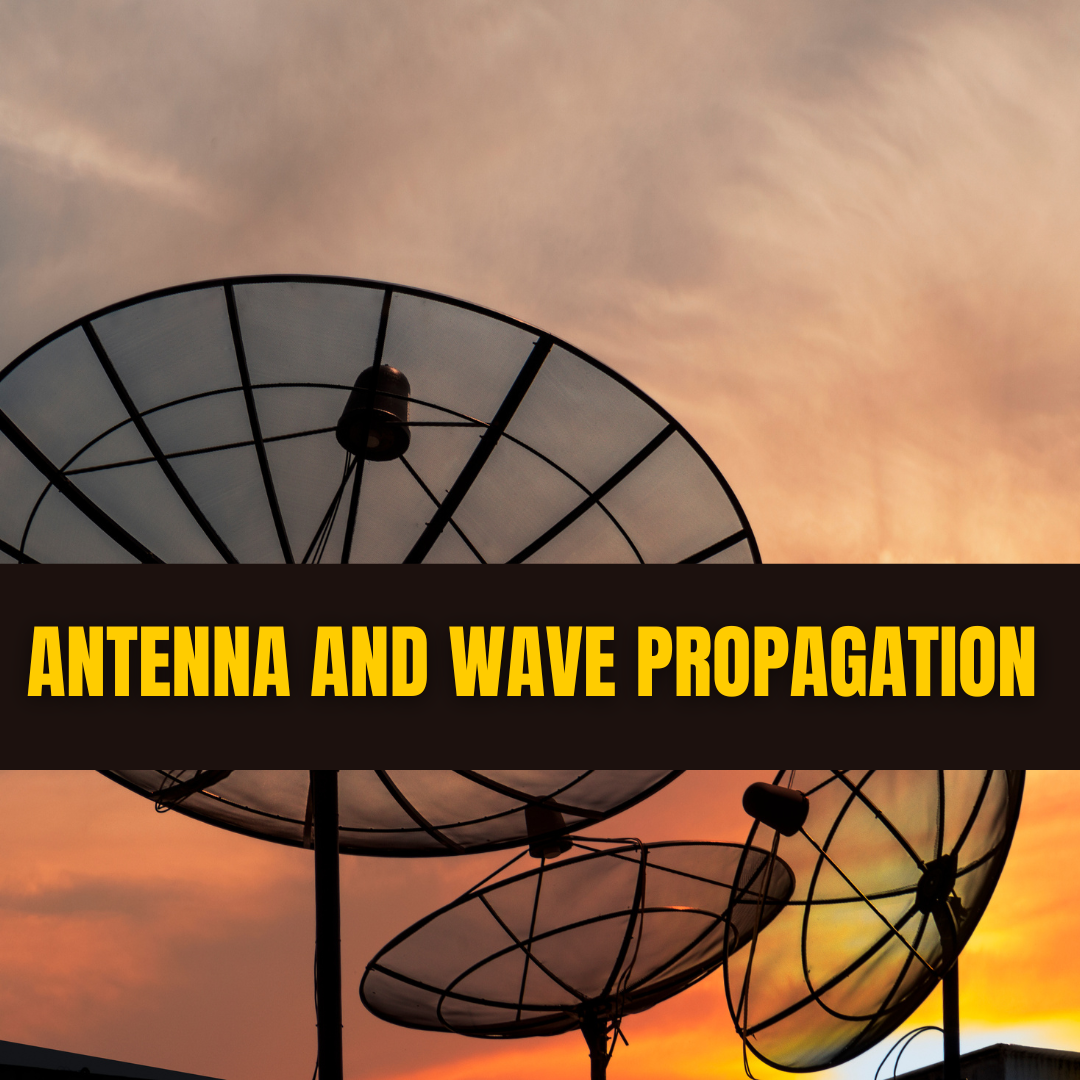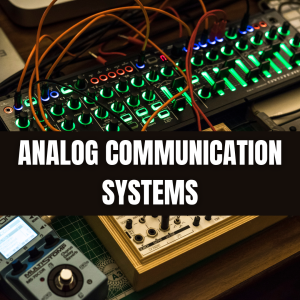Antenna and Wave Propagation
13.98$
About the course
Antenna and Wave Propagation discusses Basics of Antennas and its classification. We also cover Point Sources, Electric Dipole and Arrays Dipole. Alongside this course, Linear Arrays and Broadside Arrays are also covered in detail. Later at the end, we cover Sky Wave and Space Propagation and how different layers of earth affect it.
What will you learn?
The complete online syllabus of this course comprises 5 Learning Modules | 121 Topics of Learning | 6 Hours of Learning | 32 Assessments
Module
- Antenna basics
- Point Source and their Arrays, Electric Dipole and Array Dipoles
- Loop, Slot, Patch and Horn, Antenna
- Reflector Antennas and Antenna Measurements
- Wave Propagation
Topics of Learning
- Introduction to Antenna
- Basic Antenna Parameters
- Patterns
- Radiation Intensity and Beam Effficiency
- The Radio Communication Link
- Fields from Oscillating Dipole
- Antenna Field Zones
- Shape-Impedance Considerations
- Basic Antenna Elements
- Loops, Dipoles and Slots
- Opened-Out Coaxial-Line Antennas, Opened Out 2-Conductor (Twin-Line) Antennas
- Opened-Out Waveguide Antennas (Aperture Types) and Flat-Sheet Reflector Antennas
- Parabolic Dish and DielectricLens Antennas and End-Fire Antennas
- Broad Bandwidth Antennas: The Conical Spiral and the Log-Periodic and The Patch Antenna
- Hertzian Dipole
- Different Current Distributions in Linear Antennas
- System Temperature
- Radar and Radar Cross Section
- Radar and Radar Cross Section – The Corner Reflector (Dihedral and Trihedral)
- Bistatic Radar
- Introduction
- Point source Defined
- Power Pattern
- Phase Patterns
- Case 4 and Case 5
- Non-isotropic but similar Point Sources and the Principle of Pattern Multiplication
- Example of Pattern Synthesis by Pattern Multiplication
- Case 1 – Broadside Array (Sources in Phase)
- Case 2, 3 and 4
- The Dolph-Tchebyscheff Optimum Distribution
- Comparison of Amplitude Distributions for Eight-Source Arrays
- Huygens’ Principle
- Rectangular-Area Broadside Arrays and Arrays with Missing Sources and Random Arrays
- The Thin Linear Antenna
- Radiation Resistance at a point which is not a Current Maximum
- Fields of a Thin Linear Antenna with a Uniform Traveling Wave
- Horizontal λ/2 Antenna above Ground
- W8JK Antenna above Ground
- Stacked Horizontal λ/2 Antenna above Ground
- Vertical Antennas above a Plane Ground
- Circular Polarization with a Yagi-Uda Modifications
- The Landsdorfer Shaped-Dipole Array
- Long-Wire Antennas
- Folded Dipole Antennas
- Comparision of Far Fields of Small Loop and Short Dipole
- Far-Field Patterns of Circular Loop Antenna with Uniform Current, and The Small Loop as a Special Case
- Square Loops
- Construction and Principle
- Application
- Patterns of Slot Antennas in Flat Sheets, Edge Diffraction
- Babinet’s Principle and Complementary Antennas
- Slotted Cylinder Antennas
- Description
- The Rectangular Horn Antennas
- Beamwidth Comparision and Conical Horn Antennas
- Ridge Horns and Spectrum Horns
- Corrugated Horns and Aperture-Matched Horn
- Helical Geometry
- Practical Design Considerations for the Monofilar Axial-Mode Helical Antenna
- Helical Beam Antenna with Loops Replacing Ground Plane, and Dipole Arrays with Parasitic Elements
- Complete Axial-Mode Patterns of Monofilar Helices
- Wideband Characteristics of Monofilar Helical Antennas Radiating in the Axial Mode
- Array of Monofilar Axial-Mode Helical Antennas, Array of four Monofilar Axial-Mode Helical Antennas
- The Monofilar Axial-Mode Helix as a Parasitic Element and Polarizer, and The Monofilaar Axial-Mode Helical Antenna as a Phase and Frequency Shifter
- Linear Polarization with Monofilar Axial-Mode Helical Antennas, and Monofilar Axial-Mode Helical Antennas as Feeds
- Tappered and other Forms of Axial-Mode Helical Antennas
- Multifilar Axial-Mode Helical Antennas,and Monofilar and Multifilar Normal-Mode Helical Antennas
- Axial-Mode Helix Terminations and Antenna Rotation Experiments
- Bifilar and Quadrature Axial-Mode Helices, and Genetic Algorithm Five-Segment Helix Versus Circular Helix
- Log-Periodic Antenna
- Micro-strip Antenna
- Introduction
- Flat Sheet Reflectors
- Corner Reflector Design
- Passive (Retro) Corner Reflector
- General Properties
- A comparision between Parabolic and Corner Reflectors
- The Paraboloidal Reflector
- Spherical Reflectors
- F/D Ratio of Parabolic Reflectors, and Reflector Surfaces
- Effects of Ice Deposition on Parabolic Reflectors and Feed Methods for Parabolic Reflectors – Dipoles and Open Ended Waveguide
- Feed Methods for Parabolic Reflectors – Waveguide Horns, Rear Feed, Front Feed and Offset Feed
Broadband Basics - Infinite and Finite Biconical Antennas, and Directional Biconicals, Conicals, Disk Cones and Bow Ties
- The Frequency-Independent Concept: Rumsey’s Principle
- The Frequency-Independent Conical-Spiral Antenna
- Introduction and Basic Concepts
- Reciprocity in Antenna Measurements
- Typical Sources of Error in Antenna Measurements – Phase Error and Amplitude Taper due to Finite
- Measurement Distance
- Reflections and Other Sources of Error
- Elevated Ranges
- Anechoic Chambers and Absorbimg Materials
- Compact Antenna Test Ranges
- Near- Field Ranges
- Testing of Ranges
- Instrumentation
- Directional Pattern
- Phase
- Polarization and Impedance
- Efficiency
- Large Millimeter and Submillimeter Wave Antennas
- Electrically Small Antennas
- Effective Gain
- Specific Absorption Rate
- Description
- Surface Wave
- Effect of Frequency on Ground Wave propagation
- Effect of the ground
- Polarisation and Ground Wave Propagation
- Introduction
- Curvature of the Earth
- Earth’s Imperfections and Roughness, and Hills, tall Buildings and other Obstacles
- Introduction to the Structural details of the Ionosphere
- Refraction of Sky Waves by Ionosphere
- Maximum Usable Frequency




